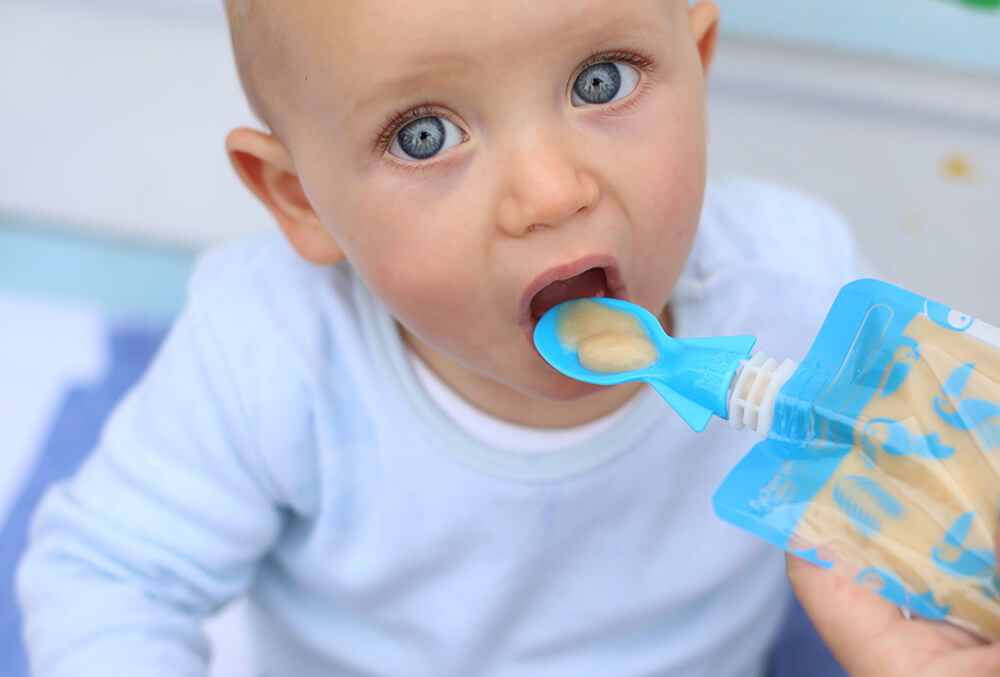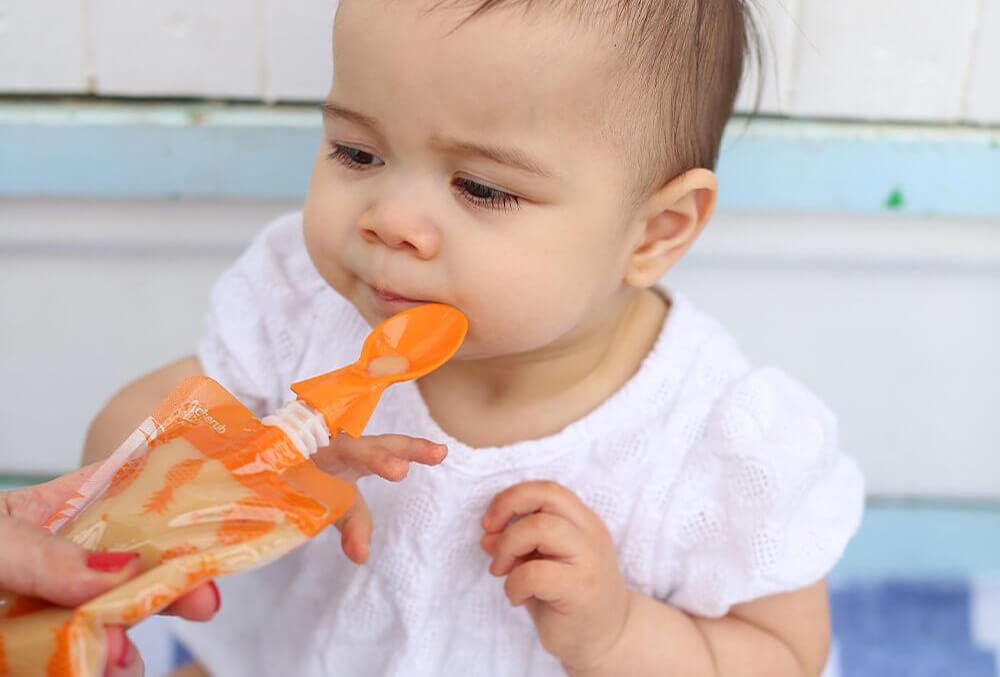Starting Solids

On this Page:
- How Do I Know When My Baby Is Ready For Starting Solids?
- Starting Solids - How Do I Start?
- How Do I Feed Baby?
- What Do I Feed My Baby?
- My Baby Is Refusing To Take Solid Food, What To Do?
- What If Baby Is Throwing Up The Food?
As your baby develops and grows, breast milk or formula becomes insufficient to meet their nutritional needs. Soon it will be time to start thinking about starting solids. Introducing bub to solids is a difficult and confusing time for many parents. To help us navigate through this vital stage of baby’s development we have recruited the help of Pediatric Speech Pathologist, Kate Roberts. Read on for her advice.
Q. How Do I Know When My Baby Is Ready For Starting Solids?
A. Knowing when baby is ready for starting solids is tricky as all babies are different. However the Australian Government, as well as the World Health Organisation (WHO) recommends that babies make the transition to solids at 6 months of age, and not before four months. Apart from their age, some signs that baby is ready to start solids include:
- Bub can sit upright with support (e.g. in a highchair).
- They have good head and neck control.
- Your baby is showing an interest in others’ food, such as watching you eat, and reaching for food.
- They open their mouth when presented with a spoon.
Q. Starting Solids - How Do I Start?
A. So baby has reached the right age and is showing the right signs that they are ready for starting solids. Now it’s time to get them used to feeding equipment and the new taste, texture and experience!
Feeding Equipment
Supervising play times with baby feeding equipment, such as baby spoons is a good way to get baby familiar with the new equipment. Playing while baby is sitting in the highchair is also a good way to get them used to being in the highchair. Be sure to use a spoon that is age appropriate; the packaging of baby feeding equipment will show what age it is recommended for. To begin with, try to use a spoon that is fairly flat so that baby can more easily get the food off the spoon. Baby transition toothbrushes are also useful to use with your baby to increase their oral awareness.
The Texture
It’s also important to get baby used to the new texture and experience of different foods when starting solids. Start baby off with purees and place it on the table top of the highchair so they can play with it. They will be trying to bring their hands with puree to their mouth at this time, so it’s best to prepare for some mess!
Q. How Do I Feed Baby?
A. Have your baby positioned in an upright position, in their highchair and be sure to introduce foods when they are alert, happy and hungry! During feeding, watch for signs of baby not wanting to continue feeding such as turning their head away, not opening their mouth to the spoon, getting distracted or getting tired. When any of these happen, stop and try again later as it’s important to keep mealtimes fun!

Q. What Do I Feed My Baby When Starting Solids?
A. The Australian Government recommends starting baby off with smooth purees in the beginning. Only introduce various thicknesses and textures once baby has transitioned well to eating. Introduce one food at a time with several days between. This helps to rule out allergies and gives baby time to get used to different tastes. Your baby might not take the food if they don’t like the flavor, so don’t give up – try something else!
For the healthiest purees try making your own, using fresh fruits and vegetables. Simply steam then blend. The Cherub Baby Steamer Blender is the perfect solution for mums on the go. Our products consists of a start to finish solution for feeding baby fresh homemade baby food. It includes the steamer blender food preparation unit, food pouch warmer and re-usable food pouches with attachable spoons and spouts. To view and purchase Cherub Baby feeding products visit here.

Remember that breast or bottle feeding should continue while solids are introduced and over time, the amount of breast or bottle feeding will reduce.
Q. My Baby Is Refusing To Take Solid Food, What To Do?
A. If baby is less than 6 months old, wait a little more time (until 6 months old, or at least a couple of weeks) and try again. If baby is 6 months or older, ensure you have tried using all the above tips. You could try other developmentally appropriate purees (such as other types of fruits or vegetables).
Q. What If Baby Is Throwing Up The Food?
A. This could be for a number of different reasons. If your baby consistently brings food back up when starting solids, we recommend that you consult your doctor.
Please note that these recommendations have been written for children who are developing in line with developmental milestones. If you have concerns about your child’s development, or your child has a disability, you should speak to your doctor before starting solids. If you have any concerns about your child’s feeding (breast, bottle, or solids), you should speak to your doctor, child health nurse, or a paediatric speech pathologist.
Introducing solid foods is a time that parents often find daunting and difficult. But with the right preparation and attitude it should be a positive experience for both parents and baby!
References:
Introducing solids – Australian Government Department of Health
Complimentary Feeding – World Health Organisation (WHO)
Confused about introducing solids? – Australian Breastfeeding Association



